All living beings are adapted to survive in the atmosphere or habitat in which they live. Certain special features help them in their survival in a particular kind of environment. These special features take years to develop due to the gene mutations caused by evolution. Gene mutations help in survival and reproduction and are passed from one generation to the next generation by a process called natural selection.
Adaptations are the changes developed by the organisms over a certain period of time to suit them to their surrounding environment. In another way, it can also be said that an evolved trait that helps an organism in surviving and reproducing in the surrounding environment is called an adaptation.
In this article, we are going to talk about which adaptation(s) would help a plant live in a desert so that you will better know about that.
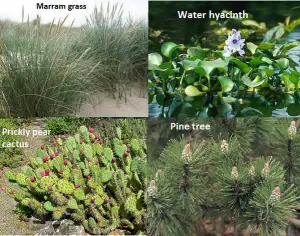
How Do Plants Survive in Deserts ?
Desert environment is very challenging for the plant’s life. Lesser rainfall and extremely hot temperature have made these desert plants adapt themselves to such conditions. They can bear the unpredictable weather conditions they face due to the extremely arid environment. Xerophytes are the plants that changed their physical structures and behavior to survive in harsh conditions. They can be found in hot or cold conditions. They are of three types :
Succulents
Succulents have adapted the ability to store water. Succulents have modified their root structure, leaf structure, and their number and also the number of stomata. Also there is a thick and waxy covering over the leaves and the stems of many desert plants. This covering does not envelope the stomata but is present all over the leaves thus keeping the plant cool and reducing evaporation. Water loss during transpiration is reduced by the smaller leaves. Succulent plants like Agaves, Aloes and cacti store lots of water in their roots, stem or leaves to beat the heat. When it rains, succulents absorb plenty of water quickly as in deserts water never sinks deep into the bottom of earth, hence evaporating quickly.
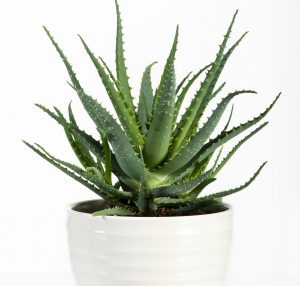
- Root system: Succulents have an extensive and shallow root system which absorbs water only a half inch under the surface. Since water is rarely available in deserts, succulents have evolved a number of ways to use whatever water is available to them.
- Stomata: Plants have stomata, the tiny pores that help the plants during photosynthesis in exchange of gases and also allow the water to be lost. Succulents have fewer stomata to reduce the water loss. Reduced surface area and having thick and fleshy leaves are also helpful in keeping the stored water intact.
- CAM Photosynthesis: Succulents use CAM Photosynthesis i.e. crassulacean acid metabolism. In this type of photosynthesis, the plants close their stomata during the daytime to prevent water loss and open them at night to take in the carbon dioxide when the temperature is low. This carbon dioxide is used the next-day during the day time to synthesize glucose. Succulents also have to protect themselves from the animals. These plants protect themselves by developing spines, by being poisonous, by camouflaging, and by growing in locations where they are inaccessible.
- Water storage: Succulents store water in leaves, stems and roots. Sometimes the water is stored in organ-like structures called tubers. These tubers store nutrients along with water and are present under the ground.
Perennial plants
Perennials have adapted themselves to the hot environment by becoming dormant during the summer season and coming back to life when water is available. Ocotillo is one such perennial plant.
- Roots: Perennials living in hot climates have large roots that go deep into the soil to keep themselves moist for a longer period of time. An example of a perennial plant is Desert lily. Flowers of desert lily can store enough nutrients to survive longer.
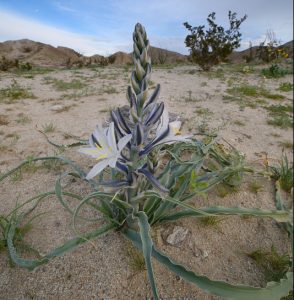
Annual Plants
Annuals as the name suggests, bloom once in a year. In deserts, the annuals or ephemerals survive for a short time. These plants become non-existent in hot and dry seasons. Such plants spend all their energy in seed production and die after that. The seeds are hard and can withstand heat and drought. The seeds germinate when it rains and grow into plants again.
How are Plants Adapted to Survive in Extreme Environments?
It can be very interesting to know how the plants have adapted to survive in extreme environments. These adaptations support the plants to conserve water, food and energy and to reproduce.
Plant Adaptations to Extremely Cold Environments
Many plants living in the extremely cold environment are small growing closer to the ground. It helps the plants to protect themselves from the wind and snow. Also, the plants gain strength structurally by growing in groups or in dense mat-like clusters. Plants living in extremely cold conditions face long winters and short summers. The plants in these areas have shallow roots which grow in the active layer of the soil to absorb nutrients from the soil and avoid permafrost. Permafrost is the land frozen permanently to a greater depth in winters and melts in summers.
- Structural Adaptations: The plants in cold and dry environments have smaller leaves so that the surface area is reduced to decrease the water loss. In cold conditions, the plants retain their leaves to protect themselves from cold and wind. These leaves also provide nutrients to the plants in such harsh conditions. Deciduous plants may shed their leaves in cold and dry conditions to lessen the water loss through stomata. Sometimes the leaves may be covered by the hairs that act as insulators against the cold. For example, Pulsatilla vulgaris and Salix arctic.
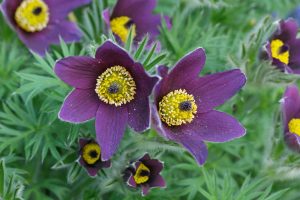
- Photosynthesis: Photosynthesis in plants in cold environments occur during the summer season when the snow melts and leaves get more sunlight. Temperature in summers in such areas is comparatively low. The plants under snow have high carbon dioxide concentrations as the gases are trapped inside. The light can also pass through the snow and the plants are able to do photosynthesis under the snow. The evergreen shrubs undergo photosynthesis quickly as the snow melts.
- Seed dormancy: Seed dormancy is also a way of survival in plants that reproduce sexually in extremely cold environments. The seeds become dormant and may germinate in the summers the next year when the conditions become favorable. The plants that reproduce sexually can also reproduce asexually like Liverworts which are Bryophytes can reproduce asexually as we.
Types of Plant Adaptations
Areas that receive more rain have plants with these adaptations:
- Drip tips: Plants with leaves having pointed tips to run off water quickly
- Epiphytes: Plants that live on the branches of the trees high up in the canopy
- Buttress roots: Larger roots have ridges for larger surface area to support big tree
An Example of Cold Environment Adaptation: Antarctic Hair Grass ( Deschampsia Antarctica )
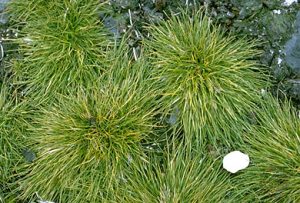
Antarctic Hair Grass is a flowering plant native to Antarctica. Antarctic Hair Grass contains proteins called dehydrin which prevent dehydration and hence protect the plants from the injuries that may occur due to dehydration and freezing. Antarctic Hair Grass also showed adaptations related to photosynthesis. There are certain structural changes within the mesophyll cells of the leaves. The chloroplasts have increased cell surface areas thereby increasing the amount of substances it exchanges with other organelles in the cell.
Plant Adaptations in Extremely Hot Environments
In extremely hot areas, the temperature can rise from 40 degrees Celsius to 49 degrees Celsius. Due to extreme heat, the air and soil in these areas is very dry. In such areas, Xerophytes survive as they need very little water.
Structural Adaptations
The plants living in extremely hot environments absorb water quickly when it rains.
- Leaves: Succulents have thick leaves which store water and these leaves are covered with a waxy coating that acts as a waterproof coating to reduce the water loss. In some plants, the leaves develop hairs to protect the plants from the scorching heat of the sun and also to retain the moisture. Leaves also have spines to escape from the animals. Sometimes the leaves have volatile organic compounds to avoid herbivores. Such compounds may also help the plants to release the oxidative stress that may be due to the extreme heat and drought.
- Root system: Mostly the plants in hot and dry places have shallow root systems to absorb nutrients from the upper layer of the soil because of the lesser rainfall. Some plants have roots that penetrate deep into the soil to absorb moisture when there is no rain for a longer time.
Adaptation in Desert Plants (Examples):
- Large fleshy stem to save water
- Thick waxy skin to reduce the loss of water and reflect heat
- To decrease the water loss, the presence of spiky and shiny leaves
- Spines protect cacti from the animals
- Deep roots to hold the moisture longer
- Photosynthesis: Plants in these areas use CAM photosynthesis pathways. In this type, the plants open the stomata at night to take in carbon dioxide and use it during the daytime to make glucose.
- Night bloom: In hot environments, some plants flower at night to attract the insects which are present at this time. For example, Dragon Fruit Cactus that bloom at night.
- Day length: Day length also affects the time of flowering. When the days are longer and the seeds germinate during the rainfall, then the time between germination and flowering is short. In some plants, the day length does not affect the flowering. Availability of water in the soil and the temperature influence the flowering time in these species.
- Seed germination: Seed germination also depends on a number of factors like temperature, seed position in the seed bank, and day length. For some species, the seeds require exposure to extreme fluctuations in temperature between night and day to let the seed coat split. Seed dormancy also needs to be broken for seed germination. Factors like rain, temperature, light, and humidity are important in breaking the seed dormancy. The seeds of Blepharis species can germinate in an hour after coming in contact with water. The sprouts will grow roots up to 50 mm in length within 24 hours. The seedlings can survive in drought conditions in another way where the seedlings survive even after the roots die. Coleoptile is one such species in which the roots regrow when exposed again to water.
5 Desert Plants and Their Adaptations
The Joshua Tree ( Yucca brevifolia )
The Joshua Tree grows in Utah, Arizona, California, and Nevada. It is also known as Yucca palm or Palm tree yucca. It gets moisture from the hot dry land by a large root system. The spiky green leaves grow in clumps on the short, stumpy branches. It is a slow-growing tree and takes years to grow to a height of 15 m.
Golden Barrel Cactus (Echinocactus Grusonii)
As the name suggests, it looks like a large, spherical, spiny globe. A green cactus with yellow or white spines can live up to 30 years. They have rare appearances due to the loss of habitats.
Brittlebush (Encelia Farinosa )
It occurs in Mexico and the Southern States. It has a stiff stem that can break easily. Yellow flowers bloom in groups and brighten up the whole desert area. These plants have adapted to the hot and dry conditions by losing the leaves. In summers the plants survive by using the moisture stored in the stem.
Creosote Bush (Larrea tridentate)
A flowering plant that is native to desert areas, is also known as greasewood. It has got its name from the smell of creosote compounds distilled from the coal tar. These plants can survive in very high temperatures and extremely hot drought conditions. These plants have yellow flowers and larger root systems to absorb water from deep in the desert soil.
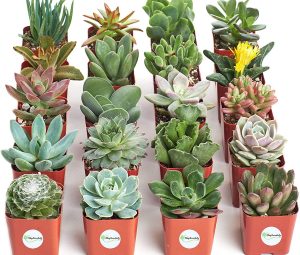
Ghost Plant (Graptopetalum Paraguayense )
It is a succulent plant that grows in hot dry conditions. It is also called the mother of the pear plant. It is a native of Mexico. This is also called porcelain succulent and grows in a rosette form. It grows close to the ground. It is very attractive and is grown as a houseplant, in terrarium,s or in gardens.
